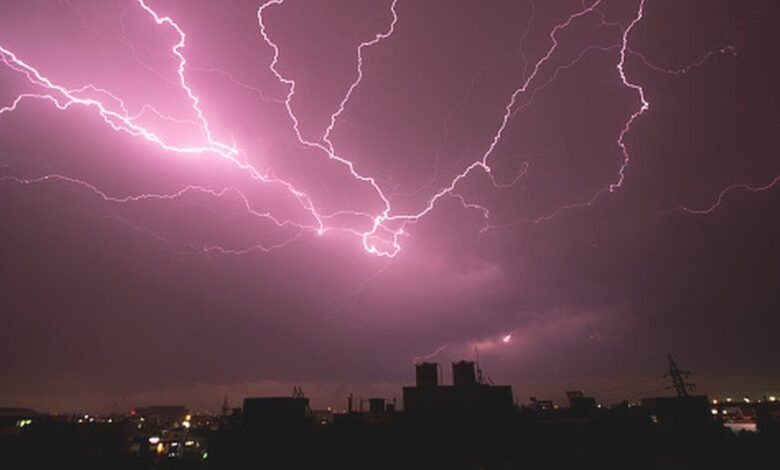
Lightning strikes have killed 20 people across eight districts of the eastern Indian state of Bihar in just 24 hours.
More thunderstorm with lightning has been forecast in northern parts of the state for Wednesday and Thursday.
Bihar Chief Minister, Nitish Kumar, has asked people to closely follow the advice by the state’s disaster management authority.
Hundreds die in India every year in lightning incidents during monsoon rains.
One of the reasons cited for the high number of deaths was the large number of people working outdoors in India compared to other parts of the world, making them more vulnerable.
On Tuesday, Mr Kumar announced a compensation of 400, 00 rupees ($5,008; £4,154) for the families of each of the deceased.
The chief minister had held a meeting last week and asked state officials to install lightning arresters at all government buildings, including schools and hospitals, The Times of India newspaper reported.
The geographical position of the state made it particularly susceptible to frequent lightning strikes during the monsoons, the report said.
In February this year, the BBC reported that the number of lightning strikes in India had risen sharply in recent years.
Satellite data gathered by the Indian Institute of Tropical Meteorology also showed that strikes had “increased rapidly” between 1995 and 2014.
India recorded more than 18 million lightning strikes between April 2020 and March 2021, according to a study by the non-profit Climate Resilient Observing Systems Promotion Council. This was a 34 per cent rise over a similar period during the previous year.
Last March, four gardeners working in a condominium in Gurgaon, a suburb near the Indian capital, Delhi, took shelter under a tree during a downpour.
Within minutes, an orange flash raced down the trunk followed by pealing thunder. Lightning usually lasts under a second. A typical lightning flash measured about 300 million volts and 30,000 amps – enough to kill.
It can cause the air around it to heat up to temperatures that are five times than that on the surface of the sun.
The four men fell to the ground. One of them died, while the others survived with burns. -BBC





